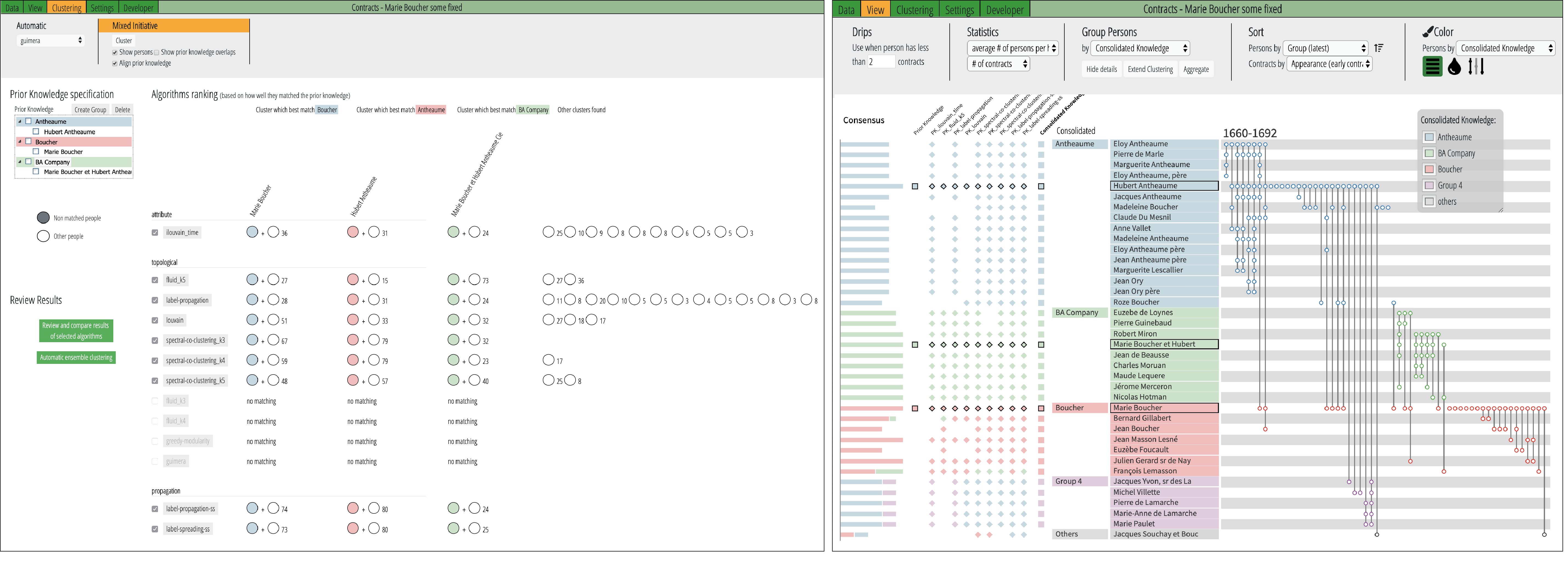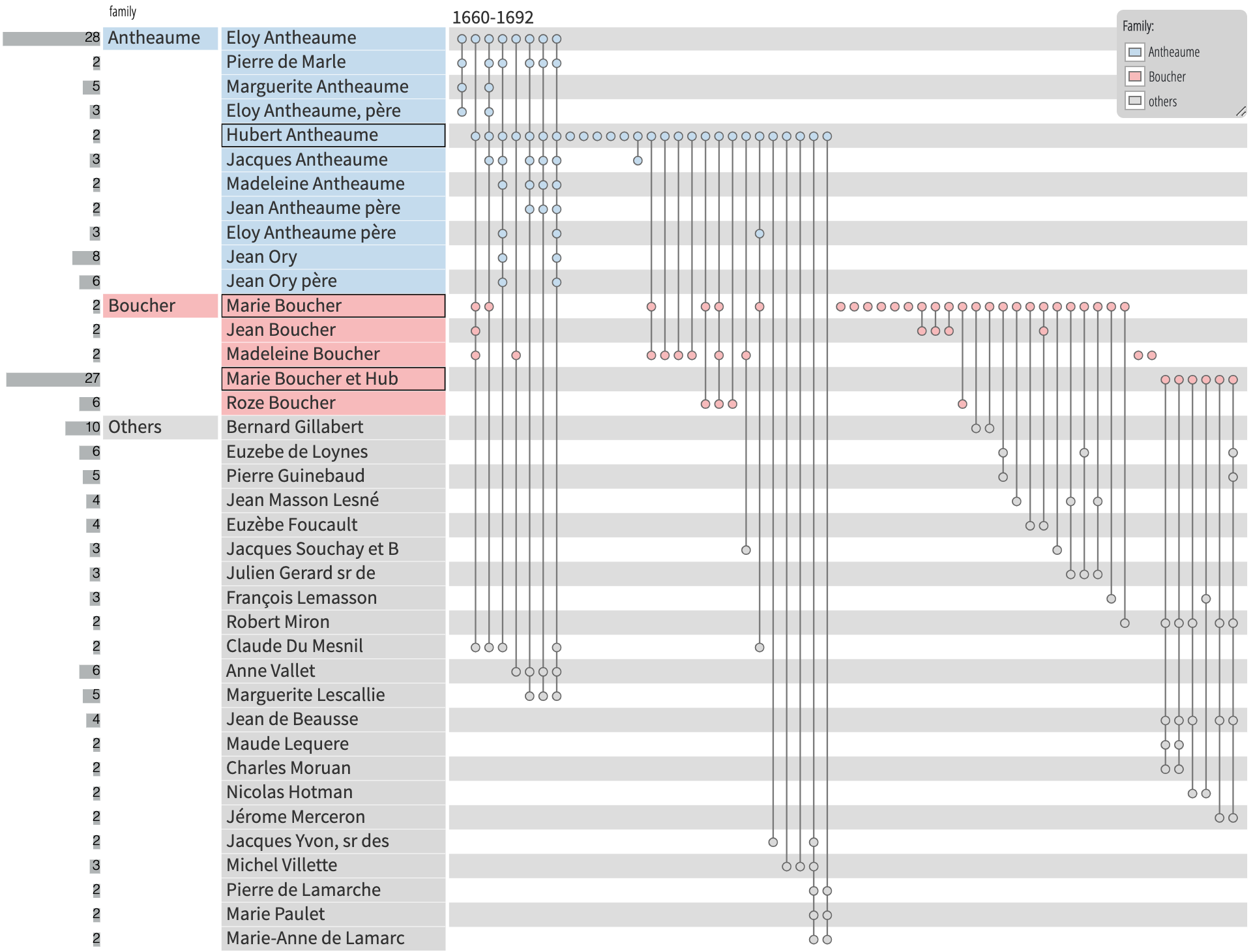Marie Boucher
Description
We asked our historian colleague her prior knowledge on her network about the trades of Marie Boucher, composed of two main families: Antheaume and Boucher. Family ties were important for merchants, but could not scale above a certain level. Marie Boucher expanded her trade network far beyond that limit. She then had to connect to bankers, investors, and foreign traders, far outside her family and yet connected to it indirectly. As hinted in her article, Dufournaud believes that the network can be split in three clusters: one related to the Boucher family, one to the Antheaume family, and the third to the Boucher & Antheaume company. Using standard visualization tools, she can see different connection patterns over time periods, but she would prefer to validate her hypothesis using more formal measures and computational methods.
To do so, she decided to specify her hypotheses as Prior Knowledge and submit them to our tool. The figure on top (top left) shows that she created three groups as PK: Marie Boucher for the Boucher family, Hubert Antheaume for the Antheaume family, and the Boucher & Antheaume corporation alone for the company.
After the ensemble clustering is done, the figure on top indicates that 9 algorithms produced a perfect match out of the 13. The first result shown (left) is an attribute based algorithm that uses the time attribute in its computation; it generated a perfect match. This is of high interest because it means that the hypotheses are very consensual among all the 9 algorithms, and furthermore, they are explainable by the time alone, that plays a major role in the community structure of this network.
In the PAOH view, she starts by consolidating the 3 PK-groups using the amount of consensus among the algorithms as well as the graph representation, and her own knowledge of the persons. At the end of this step, the Boucher, Antheaume, and Boucher & Antheaume groups are consolidated, but there are still several persons not labeled on the consolidated knowledge. She decides to review in more detail the clustering results using the ilouvain time algorithm because of its reliance on the time attribute, and also because its results seem good in the matching view. After clicking on the virtual group Others, the four other clusters computed by ilouvain time appear. Our user then investigates the node grouping proposed by the algorithm by hovering the mouse on the names of these new groups. She selects one of the clusters which seems relevant to her and consolidates it.
The final validated partition of the dataset is represented in the figure on top (right). The persons are colored and grouped by the consolidated knowledge. We can see that the final grouping makes sense in the PAOH visualisation on the right. Only one person is not part of any group: Jacques Souchay. It is not unusual in historical sources to have persons mentioned without any information on them.
Our historian colleague can now publish a follow-up article to validate her hypotheses, showing the final groups, explaining that they are related to time, that several algorithms agreed on the initial groups. Furthermore, she can publish the dataset and explain how to reproduce the analysis online, increasing trust with regard to her claims.
Publications
« Comment rendre visible le rôle économique des femmes sous l’Ancien régime ? Étude méthodologique sur les marchandes à Nantes aux XVIe et XVIIe siècles », dans Bernard Michon et Nicole Dufournaud Femmes et négoce dans les ports européens (fin du Moyen Age - XIXe siècle), Berne, Peter Lang, 2018, pp. 65‑84.

